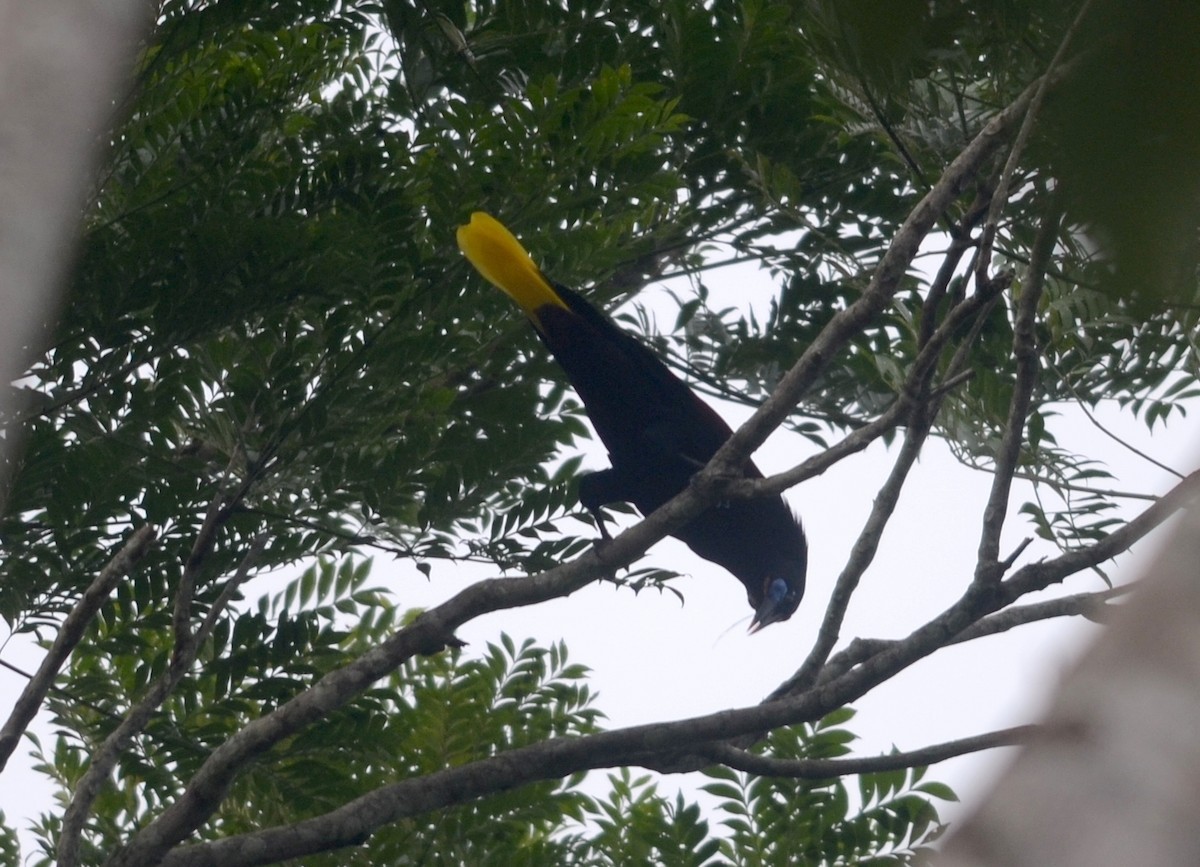Black Oropendola
A species of Oropendolas Scientific name : Psarocolius guatimozinus Genus : Oropendolas
Black Oropendola, A species of Oropendolas
Botanical name: Psarocolius guatimozinus
Genus: Oropendolas
Content
Description General Info
 Photo By Nikolaj Mølgaard Thomsen
Photo By Nikolaj Mølgaard Thomsen Description
The male black oropendola grows to a length of about 46 cm (18 in) and the female about 39.5 cm (15.6 in). The sexes are similar in appearance and are mainly black, with dark chestnut back, rump, part of the wing-coverts and crissum (the area around the cloaca). There is a bluish bare patch on the cheek, edged with pink at its lowest extremity, and an orange-tipped, black beak. 
Size
47 cm
Nest Placement
Tree
Feeding Habits
Black Oropendola chiefly consumes insects, arthropods, small vertebrates, fruit, and nectar. They exhibit versatile foraging behaviors adapted to varied dietary needs. Unique adaptations, like their beak, enable them to access nectar from large flowers, differentiating them from other species.
Habitat
Black Oropendola typically inhabits humid forests and the edges of such ecosystems. It is also found in adjacent plantation areas. This species is generally found at elevations up to 800 meters. It prefers the dense canopy and undergrowth of these regions, which span broader tropical and subtropical zones.
Dite type
Frugivorous
General Info
Feeding Habits
Bird food type

Fruit
Distribution Area
The black oropendola is endemic to humid forests of northwestern South America. Its range includes northwestern Colombia, as far east as the Magdalena River, and the extreme southeastern part of Panama, a total area of occupancy of about 108,000 km (41,700 sq mi). Its altitudinal range is up to about 800 m (2,620 ft). 
Species Status
The black oropendola has a large range and is said to be fairly common. Its population trend seems to be stable and no particular threats have been identified. For these reasons, the International Union for Conservation of Nature has assessed its conservation status as being of "least concern". 

 Photo By Nikolaj Mølgaard Thomsen
Photo By Nikolaj Mølgaard Thomsen